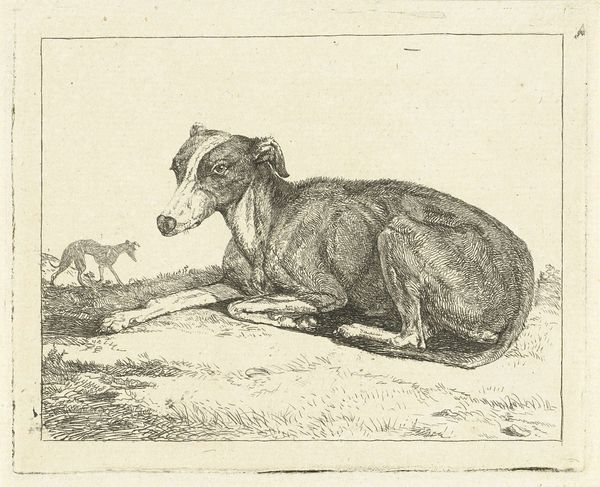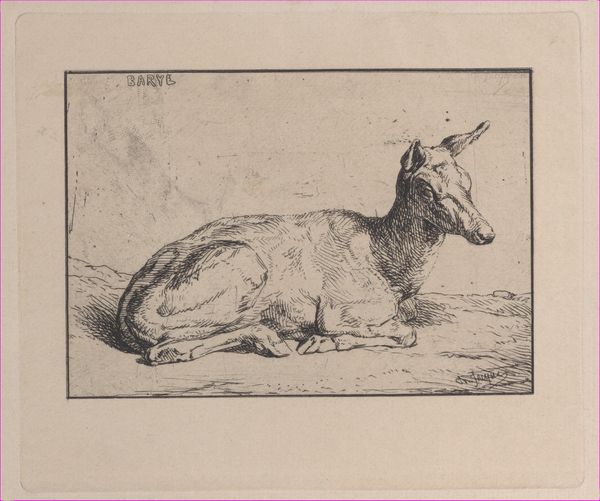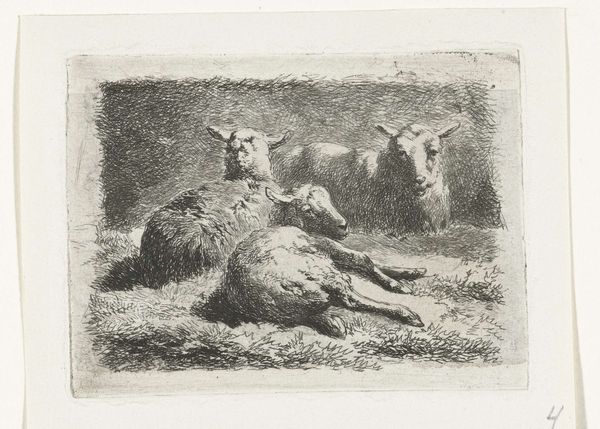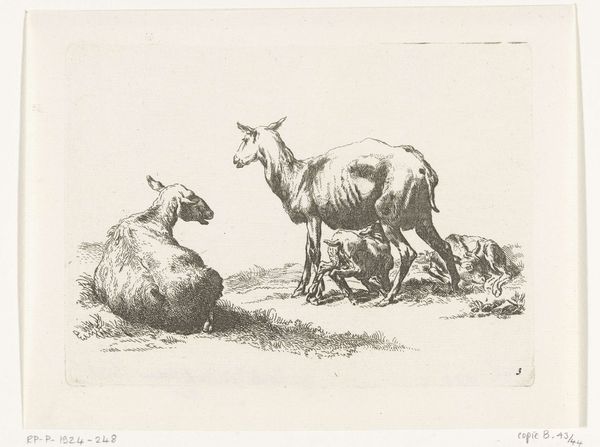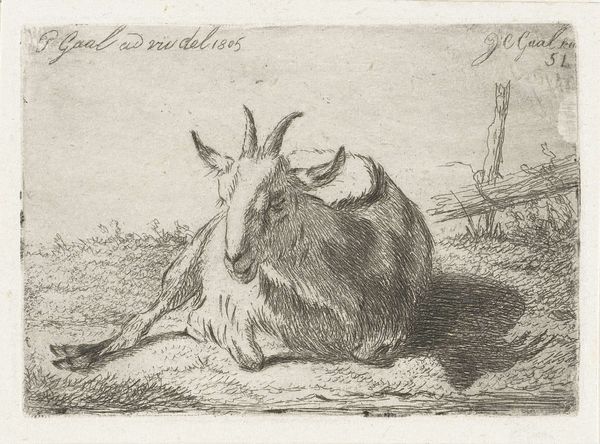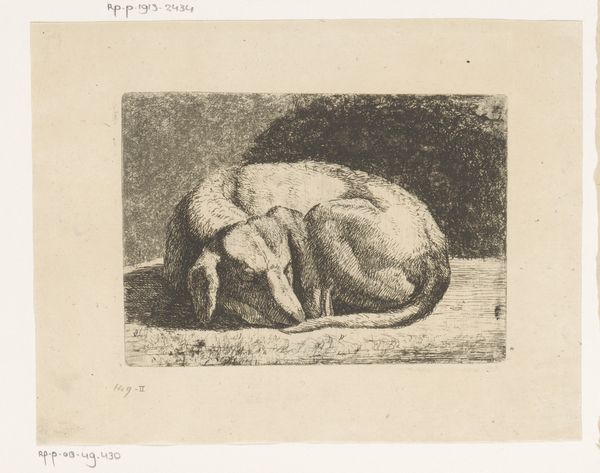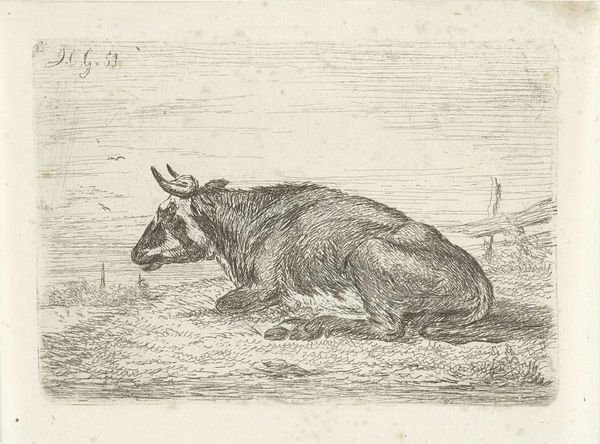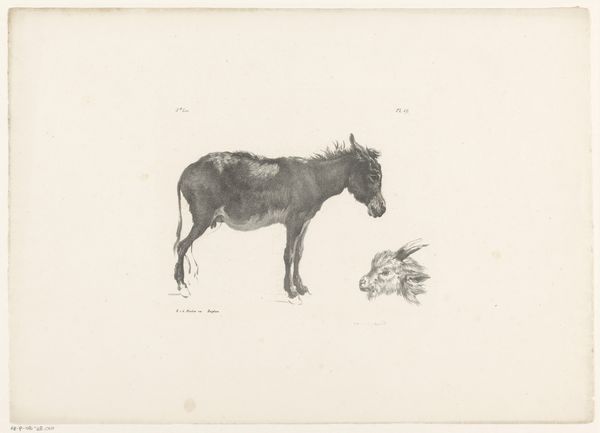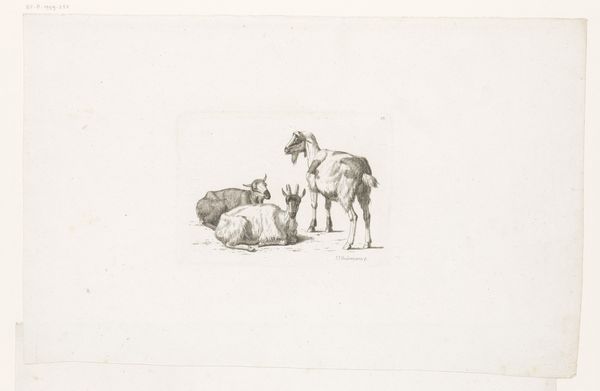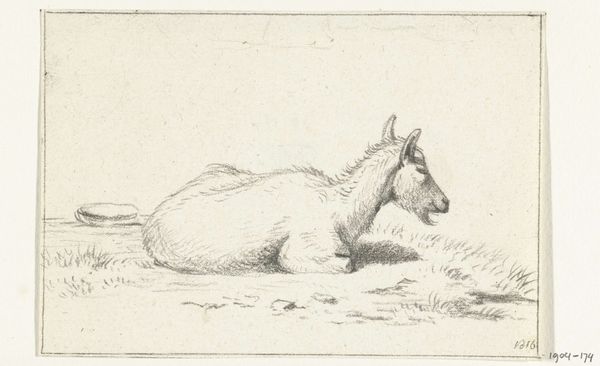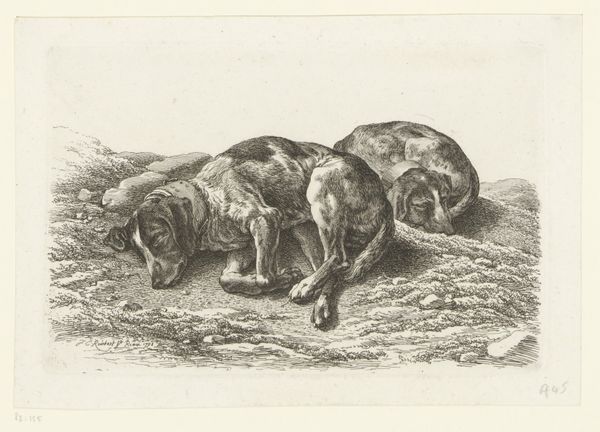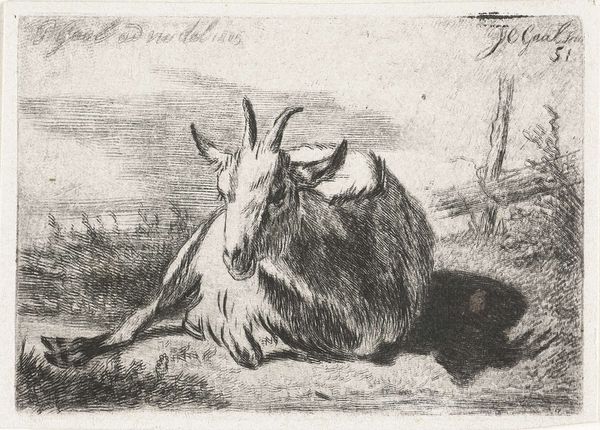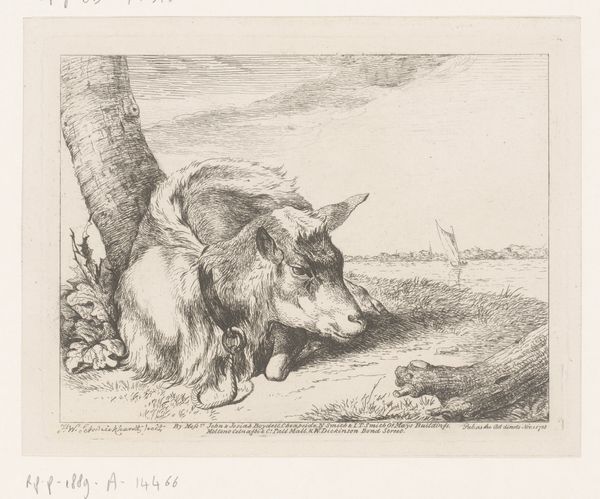
print, etching, engraving
#
animal
# print
#
etching
#
pencil sketch
#
landscape
#
pencil drawing
#
engraving
#
realism
Dimensions: height 123 mm, width 147 mm
Copyright: Rijks Museum: Open Domain
Curator: Immediately, I notice the incredible tenderness in this simple pastoral scene. Editor: Indeed. What we're observing is Johann Christian Reinhart's "Liggende geit met slapend jong," or "Reclining Goat with Sleeping Young," an etching dating back to 1791. It presents us with a snapshot of rural life, but one composed with considerable deliberation, and released as a print. Curator: The maternal goat watching over her young is a symbol found across so many cultures—of protection, nurture, and the ever-present cycle of life. Notice how Reinhart captures her vigilance even in stillness, the etching lines creating a beautiful halo effect with the goat's long fur and the landscape, adding a timeless feel. Editor: Certainly, these types of idyllic images were widely consumed during the late eighteenth century. Goat herding and similar themes took on political symbolism as an untainted representation of simpler society. The original image would have spread this propaganda widely in its time, reinforcing social memory in ways that transcend art. Curator: It's compelling to think of how Reinhart utilized such accessible imagery to convey potentially deeper societal undercurrents. The scene may depict a very real everyday moment but can be read for the cultural significance that viewers, then and now, bring to it. What does the etching process itself impart? Editor: Well, the act of etching implies a kind of democratization. These images became more readily available and affordable. Artists created, and society reproduced in abundance. And so, with prints like this one, public perceptions shifted toward valuing depictions of the commonplace and supposedly virtuous peasantry. This aligned well with notions that rural life held an inherently truer existence. Curator: Reinhart captured such authentic feeling; there's an intimate observation of nature but that gets amplified with broader notions of familial care and societal value. It invites us to reflect not only on our shared relationship with the animal kingdom but with ourselves, to the social ideals of its time, and to art's complicated role in it. Editor: An insightful interpretation. For me, Reinhart's pastoral print provides a tangible link to eighteenth-century aesthetic ideals. We can perceive it not only as a display of artistry but also as a reflection of the socio-political conditions that fostered its creation and wide dispersal.
Comments
No comments
Be the first to comment and join the conversation on the ultimate creative platform.

